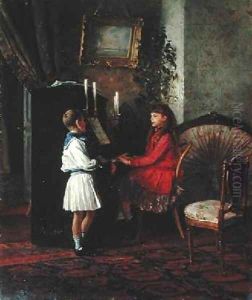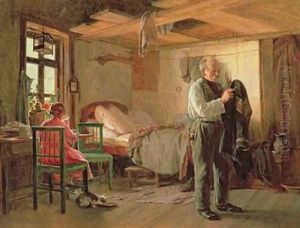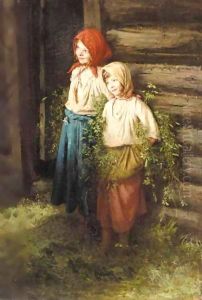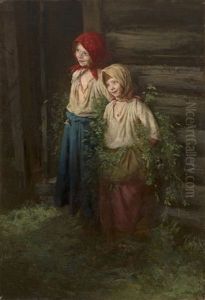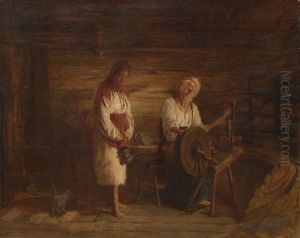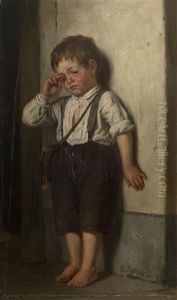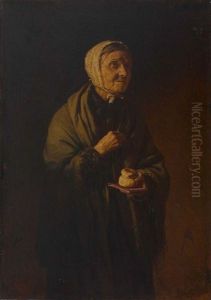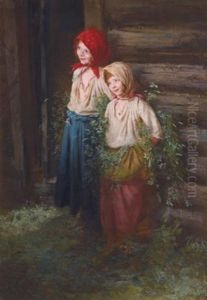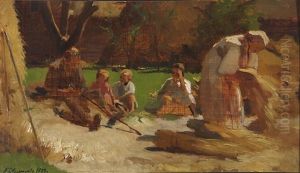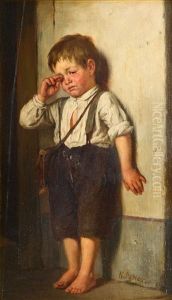Kirill Vikentevich Lemokh Paintings
Kirill Vikentevich Lemokh was a Russian painter associated with the Peredvizhniki (Wanderers) movement, which was a group of Russian realist artists who formed an artists' cooperative in protest of academic restrictions. Born on October 23, 1841, in the city of Mogilev (now in Belarus), Lemokh grew up during a period of great social change in Russia.
Lemokh initially studied at the Moscow School of Painting, Sculpture and Architecture, where he was influenced by the prevailing academic styles. However, like many of his contemporaries, he grew dissatisfied with the limitations placed on artists by the official Academy of Arts in Saint Petersburg. He eventually joined the Peredvizhniki, a group that sought to break away from these restrictions and engage with broader audiences by touring their exhibitions across various Russian cities.
Lemokh's work was known for its realistic portrayal of peasant life and the Russian countryside, often focusing on the daily lives and struggles of the common folk. His art was characterized by its warm humanism and attention to detail, qualities that endeared him to the public and critics alike. His paintings were not only artistic expressions but also social commentaries on the lives of the peasantry, reflecting the growing interest in social reform and the plight of the lower classes in late 19th-century Russia.
Despite his association with the Peredvizhniki, Lemokh was not as politically radical as some of his peers. His approach was more moderate, and he tended to depict the rustic life without overt political messages. Nevertheless, his art still played a part in the broader movement of social realism that was sweeping through Russian culture at the time.
Kirill Lemokh's contributions to Russian art were significant, and his works are held in various Russian museums, including the Tretyakov Gallery in Moscow. Throughout his career, he received recognition and was awarded medals at several exhibitions. Lemokh continued to paint until his death on June 22, 1910, in Saint Petersburg. His legacy is that of a compassionate observer of the human condition, capturing the essence of Russian rural life during a period of great transformation.
